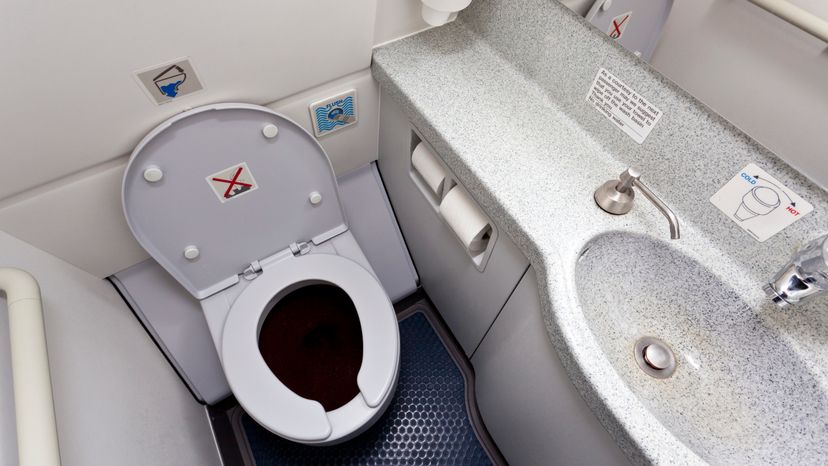
If you have read the HowStuffWorks article How Toilets Work, then you know my philosophy on this topic. Toilets have a bad image because of what we put into them, but if you can get past that and focus on the technology behind them, they can be amazing devices!
The typical home toilet uses a bowl filled with water. When you flush the toilet, it starts a siphon that drains the bowl. Gravity then carries the water into the septic tank or the sewer system. See How Toilets Workfor details.
Advertisement
The problem with this approach on an airplane (or a train, bus, boat, etc.) is that the motion of the vehicle means you cannot use a bowl filled with water -- it would splash out every time a little turbulence came along. Since there is no bowl of water, you cannot use a siphon or gravity to empty the bowl.
Airplane toilets use an active vacuum instead of a passive siphon, and they are therefore called vacuum toilets. When you flush, it opens a valve in the sewer line, and the vacuum in the line sucks the contents out of the bowl and into a tank. Because the vacuum does all the work, it takes very little water (or the blue sanitizing liquid used in airplanes) to clean the bowl for the next person. Most vacuum systems flush with just half a gallon (2 liters) of fluid or less, compared to 1.6 gallons (6 liters) for a water-saving toilet and up to 5 gallons (19 liters) for an older toilet.
It turns out that vacuum toilets have lots of advantages, even for normal installations:
- They use very little water.
- They can use much smaller diameter sewer pipes.
- They can flush in any direction, including upward. Since a vacuum system does not use gravity to move the water, there is nothing to stop the sewer pipe from going straight up.
- That the pipe does not have to go downward also means you can avoid cutting into the floor to put in new toilets.
- They can be put anywhere in the building.
These links will help you learn more:
- Vestergaard Toilet Service
- AirVac Vacuum Toilets
- Microphor Marine Toilets
- How Toilets Work
- How Sewer and Septic Systems Work
- How Airplanes Work
- How do you replace a seal under a toilet?
- Why are they replacing all of the toilets in my apartment?
Advertisement